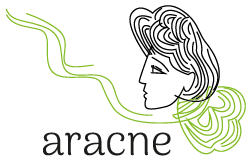Excursion of Slovenian Silk farmers to Swiss Silk Association
25th September to 28th September 2025
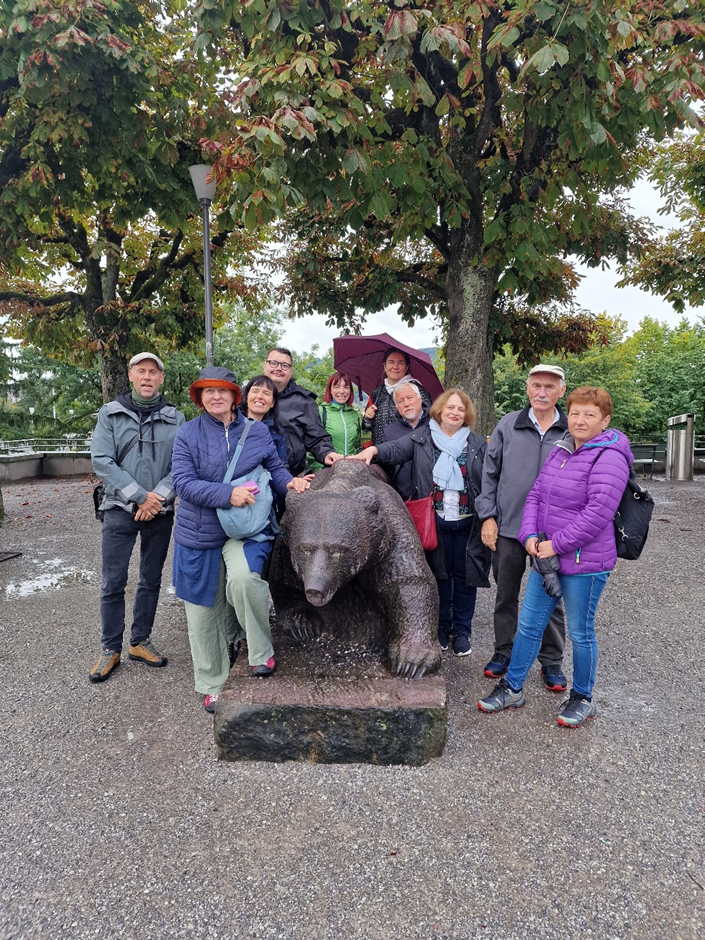
A group of silkworm farmers and artisans, accompanied by Dr. Andreja Urbanek Krajnc from the University of Maribor and Dr. Rebeka Lucijana Berčič from the University of Ljubljana Veterinary Clinic, visited the Swiss Silk Cooperative and two of its member farms in Bern, as well as the Torcitura di Gironico spinning and weaving mill in Como, Italy, within the framework of the ARACNE project and Recovery and Resilience Plan (RRP) training programme in the field of mulberry cultivation and silkworm rearing. The aim of excursion was to obtain knowledge of silk reeling and proccesing techniques caried out at Swiss Silk and to get familiar with the organisational model of the Swiss Sericulturists’ Cooperative coordinated by Ueli Ramseier as a potential blueprint for development of a rearers association in Slovenia. Furthermore, the participants obtained knowledge of best practices in mulberry cultivation and silkworm rearing and the processing of reeled cocoons into high-quality yarns and fabrics at Torcitura di Gironico (Como, Italy).
The first day, 25th September 2025, of the excursion was dedicated to the journey across the Po Valley towards Bern. The Po Valley, due to its rich sericultural history, is home to many historical mulberry trees. The drive through this area was therefore used to search and observe those old mulberry trees.
The second day of excursion, 26th September 2025, began with a visit to the headquarters of the Swiss Silk Cooperative and its silk workshop in Bolligen. The president of the cooperative, Ueli Ramseier, a textile engineer and farmer, presented to the participants the activities and the organisation structure of the cooperative and its role in the development of sericulture in Switzerland.
The beginnings of sericulture and silk production in Switzerland date back 460 years ago, when Huguenot refugees from France introduced this practice to the region. Sericulture in Switzerland reached its peak in the 19th century, when as many as 106,000 mulberry trees were planted across the country. However, sericulture in Switzerland declined before the Second World War. Its revival on a larger scale began in 2009 with the establishment of the Swiss Silk Cooperative, which emerged from the long lasting pession and dedication to silk and the need to asign and promote sericulture as supplementary agricultural activity. Today, the cooperative includes 170 members, among them 11 farms engaged in mulberry cultivation and silkworm rearing. In addition, the cooperative employs eight workers within the silk processing workshop and cooperates with ten partner companies. The cooperative functions as a network whose main role is to provide services and support to silkworm rearers. Within its activities, it buys silk from rearers and sells it on the market, teach and supports new members in the concept of parenting, and organizes educational activities. For educational purposes, cooperative also published a textbook.
At present, approximately 7,000 mulberry trees are planted within the cooperative, producing around 200 kg of silk annually. The cooperative’s silk workshop which is financed by its members, includes facilities equipped with all necessary machines for silk processing, an office, and a small shop selling silk products. The workshop is equipped with two drying ovens for cocoons, two reeling machines and a carding machine. Within its operations, the cooperative produces raw silk, prepares silk residues for medical applications, manufactures cosmetic products from silk waste,and processes pupae for small-animal feed. The products are sold at the workshop shop, online, and at the members’ farms. The entire operation of Swiss Silk is based on equality among members and a sustainable approach.
During this visit, participants of excursion gained knowledge in the field of silk processing and learned about opportunities for cooperation among rearers. The visit continued at Mr. Ramseier’s farm in Hinterkappelen, where participants toured silkworm-rearing facilities, including efficient hygiene maintenance systems, an incubator for egg hatching, rearing racks, and Japanese paper frames used for cocoon spinning. This was followed by a visit of the mulberry plantation, designed according to permaculture principles, intercropped with other plant species such as hazelnuts. Part of the plantation serves as a collection area. Interestingly, only leaves from mulberry trees grown for silkworm rearing are harvested. During this visit, participants of excursion gained new knowledge and insight into good practices in the fields of moriculture and sericulture. The next stop was Bergfeld Hof Farm, where participants visited the shop which offers products from the Swiss Silk Cooperative and other farm products, as well as those from business partners. The visit also included a tasting of mulberry iced tea. This visit provided participants of excursion with examples of good marketing practices and innovative uses of by-products from sericulture. After a sightseeing in Bern, a city of 144,000 inhabitants, during which participants visited the Medieval Old Town with the Clock Tower, Gothic Cathedral, numerous fountains, and the Federal Palace, the day concluded with a dinner between the excursion participants and the members of the Swiss Silk Board. Over a traditional Swiss cheese fondue, experiences of rearers were shared.

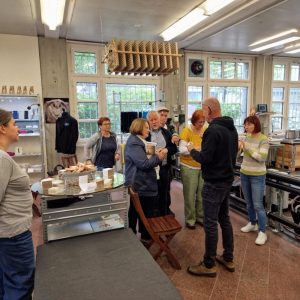





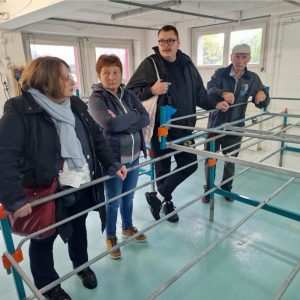

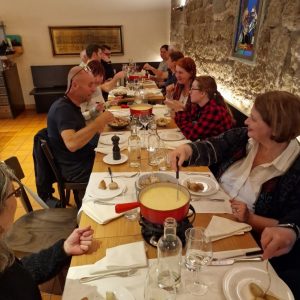



Saturday began with visits to Fluck Farm and Hiltikon Farm in Menznau, located about 2 km apart. At Fluck Farm, situated at 650 m above sea level, in addition to cattle and pig farming, the owners are also engaged in sericulture. For this purpose, a two-storey agricultural building was constructed: the lower floor serves for silkworm rearing, while the upper is used for conducting sericulture workshops. Hiltikon Farm, located at 700 m above sea level, maintains a 30-are plantation of approximately 700 mulberry trees to ensure pesticide-free leaves for silkworm rearing. During the excursion, participants observed the autumn silkworm rearing process. The Swiss Silk cooperative members adhere to strict production guidelines, which ensure a balance between animal-friendly rearing, sustainability, and economic efficiency. Farms obtain silkworm eggs from the cooperative and deliver the cocoons for further processing and sale. They also sell various products of other cooperative members.
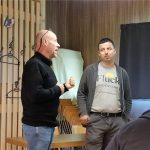
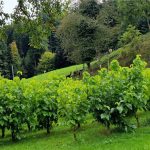

The next destination was Como, Italy, where participants visited the Torcitura di Gironico silk spinning and weaving factory led by Daniela and Ronaldo Peverelli and their sons. Until the late 1980s, the Como area was the center of the Italian silk industry, but today, this factory is one of the few still operating. It produces fabrics made of pure silk or blends with metallic or synthetic threads, cotton, linen, and other fibers. The high quality of its products is reflected in its clientele, which includes renowned companies of the Italian high-fashion industry.Participants were introduced to further stages of silk thread processing. The company operates with environmental responsibility, ensuring production processes free from harmful substances. With its own spinning and weaving facilities, it controls all stages of production, from silk thread to finished fabric. During the visit, participants gained knowledge in the field of silk processing. The day concluded with a dinner, during which rearers discussed the current situation and challenges of the sericulture sector.
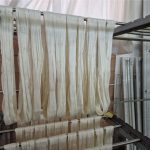

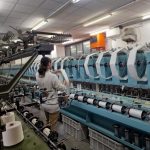
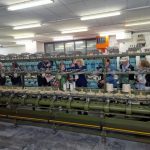

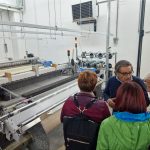
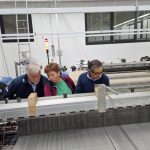
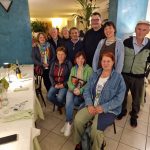
Sunday was devoted to visit lake Como, including the Cathedral of the Assumption of Mary, where special attention was given to nine tapestries woven at the end of the 16th century in Ferrara, Florence, and Brussels.
The return journey to Slovenia was filled with lively discussions about how all Slovenian stakeholders along the silk value chain, from mulberry to silk products, could strengthen their cooperation, become more recognizable, effective, and successful in achieving common goals.


The excursion provided participants with insight into high-quality silk production and processing, as well as opportunities for the development of the sericulture sector and its connection with other industries.
The excursion provided participants with insight into high-quality silk production and processing, as well as opportunities for the development of the sericulture sector and its connection with other industries.
We gratefully acknowledge the shared knowledge and demonstration by Ueli Ramseier and Daniela and Ronaldo Peverelli from Torcitura di Gironico, and hope for further collaboration in the future.

